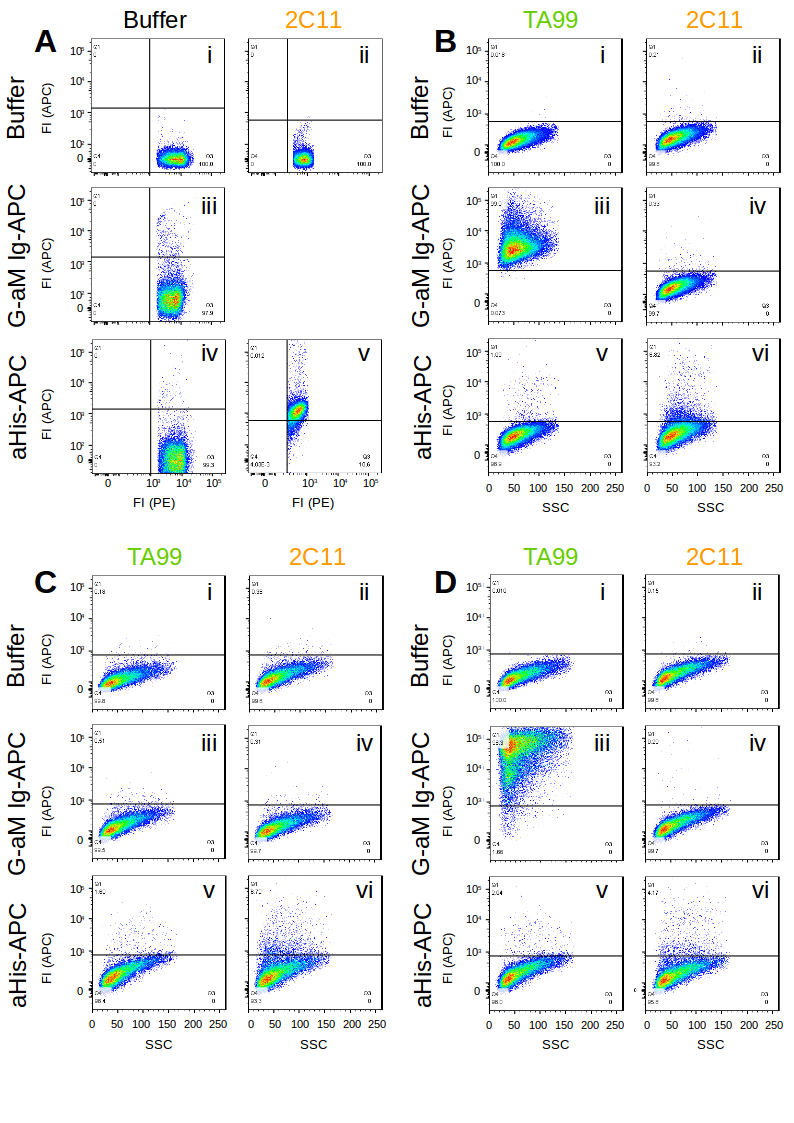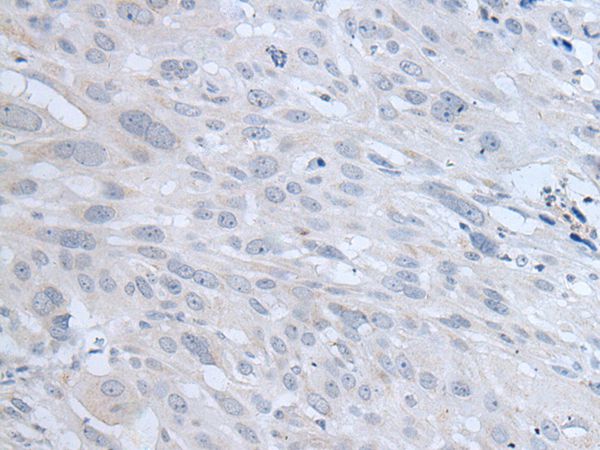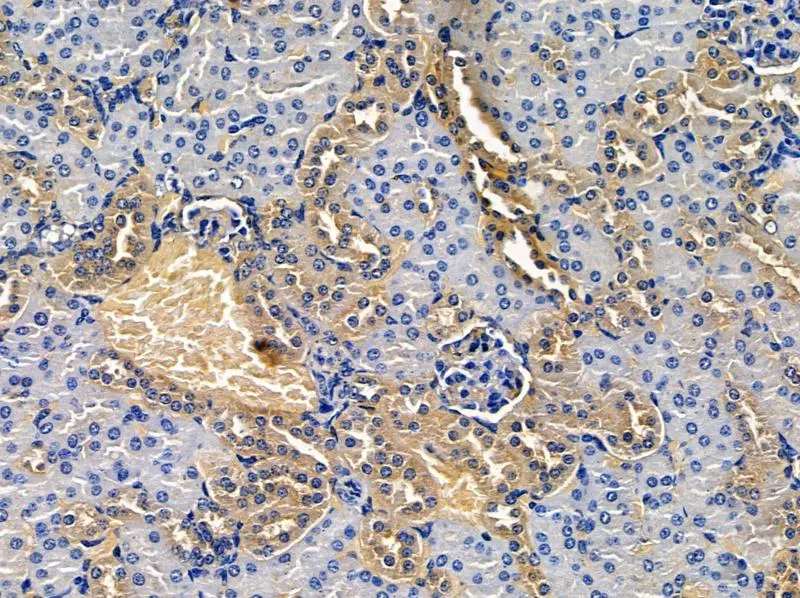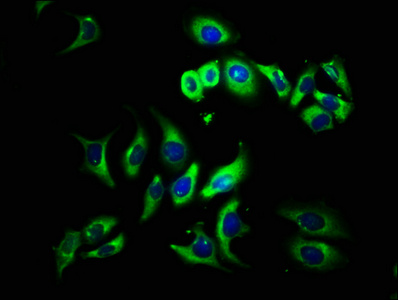
Flow-cytometry using anti-CD3 epsilon (TA385672, 2C11 scFv) and TRP1 (TA385802, TA99) antibodies. Mouse splenocytes (A), B16F10 murine melanoma cells (B), KPC3 pacreas carcinoma cells (C) and KPC3 cells transfected with the Trp1 gene (D) were fixed using 2% PFA, permeabilised using 0.5% Triton and were subject to a primary treatment of either buffer, mouse-IgG1 chimeric 2C11 or mouse-IgG1 chimeric TA99 (indicated above plots) before a secondary treatment with buffer, goat anti-mouse Ig-allophycocyanin (G-aM Ig-APC) or anti-HisTag-APC (aHis-APC) antibodies (indicated beside plots). In panel A, splenocytes were also stained with a commercially available anti-CD3 (2C11) antibody conjugated to phycoerythrin (PE); all cells (i-v) were CD3 and thus PE positive. In subpanel A v an increase in APC fluorescence intensity (FI(APC)) indicates binding of aHis-APC to 2C11 bound to CD3 at the cell surface. Some Ig containing proteins expressed by the splenocytes may explain the increase in APC fluorescence in subpanel A iii. In panel B an increase in FI(APC) in subpanel iii indicates that TA99 binds to heavily expressed TRP1 at B16F10 cell surfaces and is then detectable using an G-aM Ig-APC antibody. Conversely, G-aM Ig-APC did not detect 2C11 at the cell surface, whereas a subset of cells with 2C11 bound to the surface were detectable using aHis-APC. Panel C shows that TRP1 is not detectable in KPC3 carcinoma cells (Ci, iii, v) as expected, and that again, aHis-APC is able to detect a small subset of CD3 expressing cells (C vi). When transfected with the Trp1 gene, KPC3 cells then strongly express TRP1 and it becomes detectable (D iii). A small subset of CD3 positive cells was again detectable in Trp1 transfected KPC3 cells (D vi). All analyses were made using FACSCanto flow-cytometer.
TRP1 (TYRP1) Rabbit Monoclonal Antibody [Clone ID: TA99]
TA385802
ApplicationsFlow Cytometry, ImmunoFluorescence, ImmunoPrecipitation, Western Blot, ELISA, ImmunoHistoChemistry
Product group Antibodies
ReactivityHuman
TargetTYRP1
Overview
- SupplierOriGene
- Product NameTRP1 (TYRP1) Rabbit Monoclonal Antibody [Clone ID: TA99]
- Delivery Days Customer14
- ApplicationsFlow Cytometry, ImmunoFluorescence, ImmunoPrecipitation, Western Blot, ELISA, ImmunoHistoChemistry
- CertificationResearch Use Only
- ClonalityMonoclonal
- Clone IDTA99
- Gene ID7306
- Target nameTYRP1
- Target descriptiontyrosinase related protein 1
- Target synonymsCAS2, CATB, GP75, OCA3, TRP, TRP1, TYRP, b-PROTEIN, 5,6-dihydroxyindole-2-carboxylic acid oxidase, DHICA oxidase, catalase B, glycoprotein 75, melanoma antigen gp75
- HostRabbit
- IsotypeIgG
- Protein IDP17643
- Protein Name5,6-dihydroxyindole-2-carboxylic acid oxidase
- Scientific DescriptionRecombinant Anti-TRP-1, gp75 (Clone TA99)
- ReactivityHuman
- Storage Instruction-20°C,2°C to 8°C
- UNSPSC12352203







